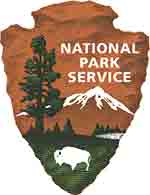 A new National Park Service (NPS) report shows that 17,834,698 visitors to national parks in North Carolina spent $1.19 billion in the state in 2015. That spending resulted in 19,984 jobs and had a cumulative benefit to the state economy of $1.67 billion.
"The national parks of North Carolina attract visitors from across the country and around the world," said Stan Austin, Southeast Regional Director. "Whether they are out for an afternoon, a school field trip, or a month-long family vacation, visitors come to have a great experience, and end up spending a little money along the way. This new report shows that national park tourism is a significant driver in the national economy - returning $10 for every $1 invested in the National Park Service - and a big factor in our state's economy as well, a result we can all support."
The national parks in North Carolina and their individual economic impact figures are:
Blue Ridge Parkway: 8,742,112 non-local visitors spent $582.7 million, resulting in 9,407 jobs and a cumulative benefit to the state economy of $798.8 million
Cape Hatteras National Seashore: 2,132,600 non-local visitors spent $140.1 million, resulting in 2,169 jobs and a cumulative benefit to the state economy of $174.6 million
Cape Lookout National Seashore: 276,593 non-local visitors spent $15.7 million, resulting in 248 jobs and a cumulative benefit to the state economy of $17.7 million
Carl Sandburg Home National Historic Site: 60,989 non-local visitors spent $3.9 million, resulting in 65 jobs and a cumulative benefit to the state economy of $5 million
Fort Raleigh National Historical Site: 243,503 non-local visitors spent $15.8 million, resulting in 258 jobs and a cumulative benefit to the state economy of $20.2 million
Great Smoky Mountains National Park: 4,445,562 non-local visitors spent $378 million, resulting in 5,941.76 jobs and a cumulative benefit to the state economy of $512.4 million
Guilford Courthouse National Military Park: 186,986 non-local visitors spent $12.2 million, resulting in 208 jobs and a cumulative benefit to the state economy of $16.5 million
Moores Creek National Battlefield: 84,223 non-local visitors spent $5.6 million, resulting in 86 jobs and a cumulative benefit to the state economy of $6.7 million
Wright Brothers National Memorial: 367,235 non-local visitors spent $23.9 million, resulting in 388 jobs and a cumulative benefit to the state economy of $30.6 million
*The numbers for visits and visitor spending represents the non-local recreational visitation, and not the total park visitation and spending by local residents. Economic impacts describe the net changes to the economic base of a regional economy that can be attributed to the inflow of new money to the economy from non-local visitors. Economic impact estimates only include spending by non-local visitors. Spending by local visitors is excluded because if local visitors choose not to visit the park, they will still likely spend a similar amount of money within the local economy participating in other local recreation activities. Economic impacts can be interpreted as the economic activity that would likely be lost from the local economy if the National Park was not there. Complete park visitation statistics reports can be found at the following link: https://irma.nps.gov/Stats/. For research methods see http://nature.nps.gov/socialscience/docs/NPS_VSE_2015_FINAL.pdf
The peer-reviewed visitor spending analysis was conducted by economists Catherine Cullinane Thomas of the U.S. Geological Survey and Lynne Koontz of the National Park Service. The report shows $16.9 billion of direct spending by 307.2 million park visitors in communities within 60 miles of a national park. This spending supported 295,000 jobs nationally; 252,000 of those jobs are found in these gateway communities. The cumulative benefit to the U.S. economy was $32 billion.
According to the 2015 report, most park visitor spending was for lodging (31.1 percent) followed by food and beverages (20.2 percent), gas and oil (11.8 percent), admissions and fees (10.2 percent) and souvenirs and other expenses (9.8 percent).
Report authors this year produced an interactive tool. Users can explore current year visitor spending, jobs, labor income, value added, and output effects by sector for national, state, and local economies. Users can also view year-by-year trend data. The interactive tool and report are available at the NPS Social Science Program webpage: go.nps.gov/vse.
The report includes information for visitor spending by park and by state.
To learn more about national parks in North Carolina and how the National Park Service works with North Carolina communities to help preserve local history, conserve the environment, and provide outdoor recreation, go to www.nps.gov/NORTHCAROLINA.
This year marks the 100th anniversary of the National Park Service. To celebrate the centennial, the NPS is inviting all generations to discover or rediscover the special places that belong to all Americans. It is challenging everyone to "Find Your Park" with creative events and activities throughout 2016. For more information visit: http://FindYourPark.com.
The National Park Service has more than 20,000 National Park Service employees care for America's 410 National Parks and work with communities across the nation to help preserve local history and create close-to-home recreational opportunities. Learn more at www.nps.gov.
Submitted by Kristin Lessard |






